Date 5 April 1968 Survivor 1 | Survivors 1 Registration XF442 Injuries (nonfatal) 0 Crew count 1 | |
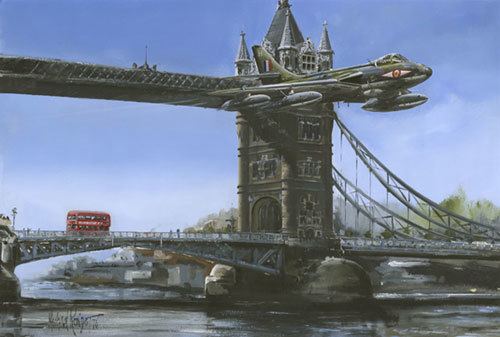 | ||
Summary Aircraft flew under bridge Similar 1968 Kham Duc C‑130 shootdown, MacRobertson Miller Airlines Fl, North Central Airlines Fl, Los Angeles Airways F, Northeast Airlines Flight 946 | ||
The Hawker Hunter Tower Bridge incident occurred on 5 April 1968 when Royal Air Force (RAF) Hawker Hunter pilot Alan Pollock performed unauthorised low flying over several London landmarks and then flew through the span of Tower Bridge on the Thames. His actions were to mark the 50th anniversary of the founding of the RAF and as a demonstration against the Ministry of Defence (Air) for not recognising it.
Contents

Upon landing he was arrested and later invalided out of the RAF on medical grounds which avoided a court martial.
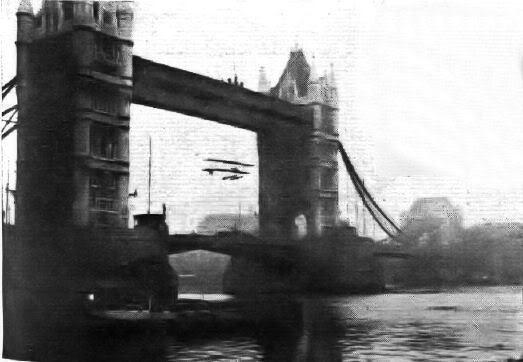
Background
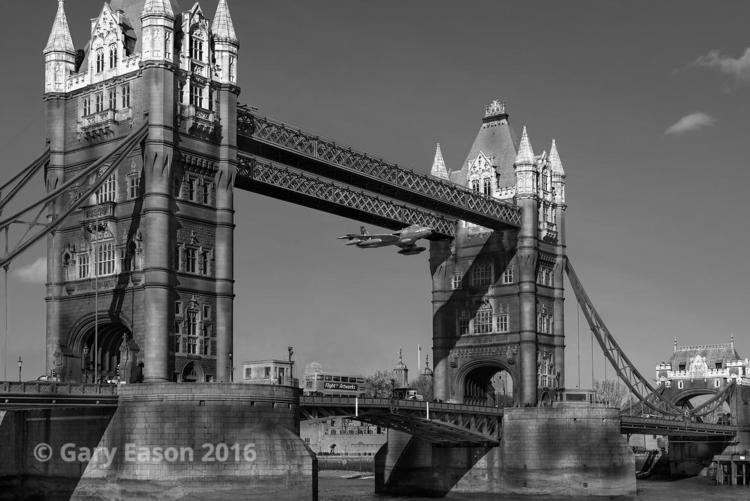
In the 1960s, the British defence industry saw a shifting emphasis from manned aircraft towards guided missiles, originating from the 1957 Defence White Paper by British Defence Minister Duncan Sandys. The British aircraft industry had slipped into general decline and morale in the aerial services of the British armed forces was low. Flight Lieutenant Alan Pollock, a flight commander in No. 1 (Fighter) Squadron RAF, was further displeased that no aerial displays had been planned to mark the RAF's 50th anniversary.
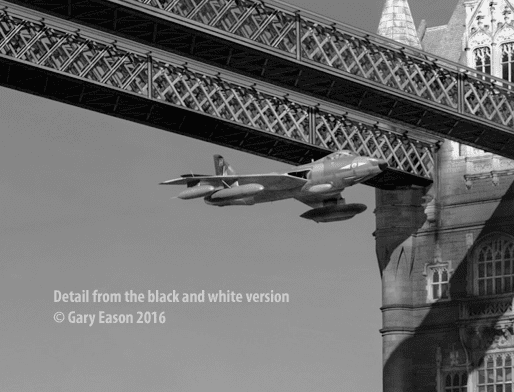
On 1 April 1968, Pollock and other members of No. 1 Squadron took part in anniversary leaflet raids on other RAF stations and on 4 April visited RAF Tangmere, where they performed a display.
Incident
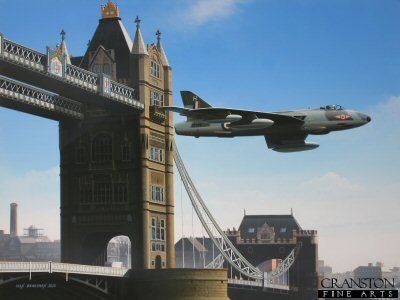
On 5 April 1968 Pollock decided on his own initiative to mark the occasion of the RAF anniversary with an unauthorised display. His flight left the soon-to-be-closed RAF Tangmere in Sussex to return to RAF West Raynham in Norfolk, a route that took them over London. Immediately after takeoff, Pollock left the flight and flew low level. Having "beaten up" Dunsfold Aerodrome (Hawker's home airfield), he then took his Hawker Hunter FGA.9 (XF442), a single-seater, ground-attack jet fighter, over London at low level, circled the Houses of Parliament three times as a demonstration against Prime Minister Harold Wilson's government, dipped his wings over the Royal Air Force Memorial on the Embankment and finally flew under the top span of Tower Bridge. He later wrote of the decision to fly through Tower Bridge:

Until this very instant I'd had absolutely no idea that, of course, Tower Bridge would be there. It was easy enough to fly over it, but the idea of flying through the spans suddenly struck me. I had just ten seconds to grapple with the seductive proposition which few ground attack pilots of any nationality could have resisted. My brain started racing to reach a decision. Years of fast low-level strike flying made the decision simple . . .
Knowing that he was likely to be stripped of his flying status as a result of this display, he proceeded to "beat up" several airfields (Wattisham, Lakenheath and Marham) in inverted flight at an altitude of about 200 feet en route to his base at RAF West Raynham, where, within the hour, he was formally arrested by Flying Officer Roger Gilpin.
Although other pilots had flown under the upper span of Tower Bridge, Pollock was the first to do so in a jet aircraft.
Aftermath
In the immediate aftermath of the incident his unit was posted to North Africa without him while he remained on a charge. He was subsequently invalided out of the RAF on medical grounds. This avoided a court martial and the embarrassment to the government of Pollock giving a reason for his stunt and garnering public support.
